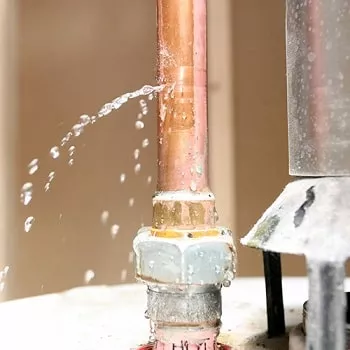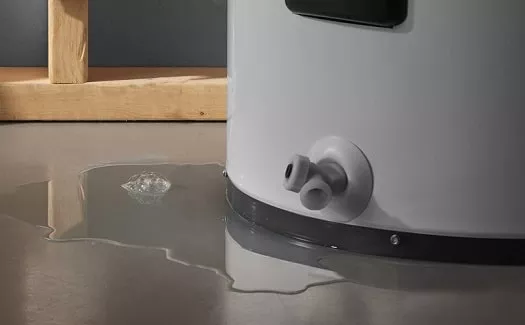
It's your worst nightmare! You've found a puddle of water on the floor coming from your water heater, now what do you do? Do you know how to fix a leaking water heater? If not, stick around. It's very likely that any novice will be able to handle the fix. At the very least, we can help you to diagnose the issue.
Tip: Work Smart, Not Hard
Before you try to fix the leak, did you make sure and take the time to isolate the problem to the water heater? Just because there's a puddle around your water heater doesn't mean it came from the water heater. The source of the puddle may not require a fix (for example, it could be the PRV at work).
Wipe up all the water and look around and try to determine a source. If nothing immediately jumps out at you, step away for a little bit. Then, come back and check. If no water is visible anywhere, then great! If you've isolated the leak to the water heater, then you're ready to proceed with the fix:
What to Do If the Water Heater is Leaking
Start your project the right way. Safety first.
- Cut the water off - there should be a valve on the cold water inlet valve to your water heater tank. This may be the source of the leak. If the valve is leaking, then you need to cut the water supply to the entire house and then replace the valve. How about that, you're done by the end of step 1.
- Cut the energy source - if you're working with an electric water heater, you must cut the power at the circuit breaker. You don't want to take any risks with electrical work, especially a 240-volt water heater. If you're working with a gas-fueled tank, then shut off the gas supply valve before proceeding.
- Find and fix the leak - it's going to take a little bit of investigating to find the leak. Once you do, knowing the right fix is the easy part:

What Causes a Water Heater to Leak?
There are a variety of potential causes, so you will want to examine these key areas of the water heater and home to determine the appropriate course of action:
- Check inlet/outlet connections - you may have a fitting that's come loose where these pipes connect to your water heater. If so, tighten them up, and you should be good to go.
- Look under the tank - you have a crack in your tank, and water dripping from the bottom of the tank is a possible sign of this issue. If you do have a cracked tank, then the solution is, unfortunately, a new replacement. Sometimes a leak from the top of the tank can run down the side of it and give the appearance that it's coming from the bottom, so be sure to eliminate this possibility. Check out this water heater replacement tutorial.
- Check the drain - verify that the drain valve is closed shut. If you see leaking from there, it might just be the washer that needs replacement. Here is a helpful tutorial video that shows how to replace the hose bibb on the drain.
- Look at the PRV - the pressure relief valve is designed to open and relieve pressure when there is too much built up in the tank. It's possible the PRV caused the leak, and it was a one-time thing that you don't need to worry about. It's also possible that you have set the temperature too high, or the water pressure in your home is too high, and the PRV will continue to cause puddles. Lower the temperature to 120-degrees Fahrenheit, and if you still see the leakage from the PRV, it may be time or a new one.
- Verify proper water pressure - according to code, your water pressure should not exceed 80 PSI. Plumbers come across homeowners with water pressure that far surpasses that recommendation, and if that's you, then you are taking a gamble. Lower your water pressure, if necessary.
Conclusion
If the problem was the inlet or outlet, the temperature, or the water pressure, then you should be done at this point. If it's a bad tank, drain, or PRV, then you need to immediately drain the tank and either handle the fix/replacement yourself or call a professional.
Related resources:
How to Replace a Thermocouple
How to Replace a Water Heater Element
How to Clean a Thermocouple
How to Replace a Water Heater Thermostat
T&P Valve Replacement



